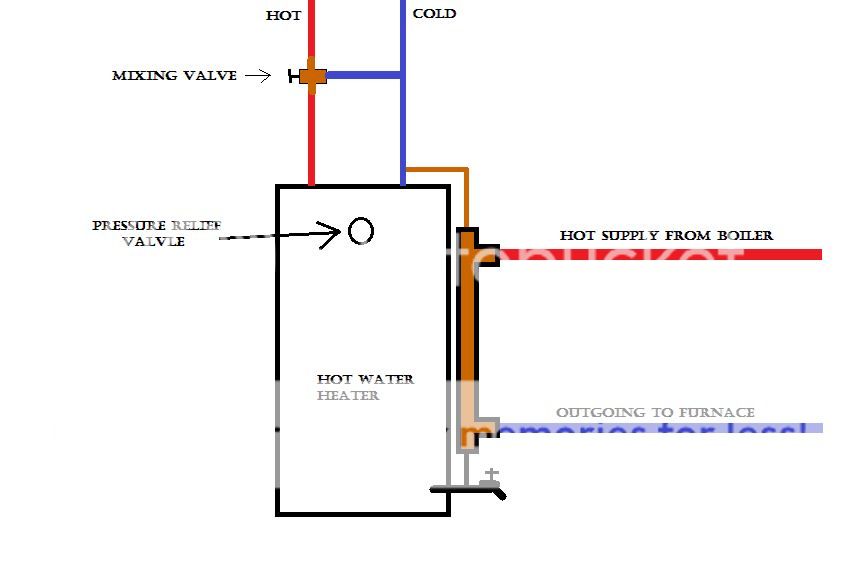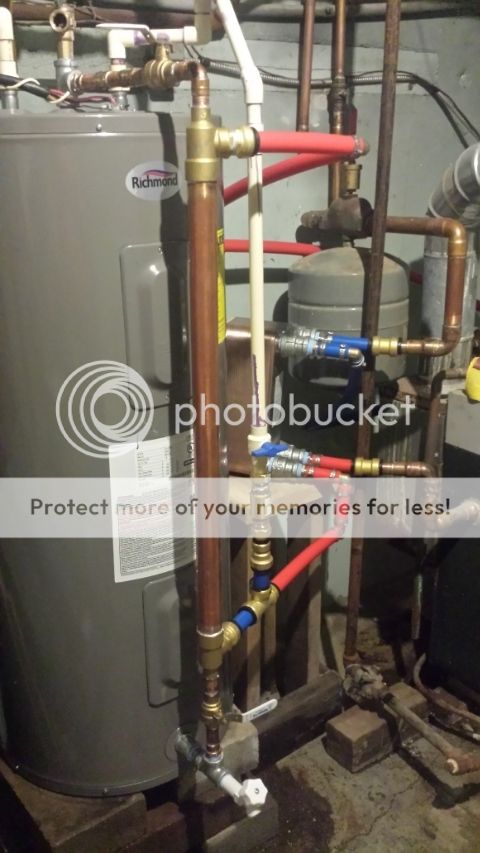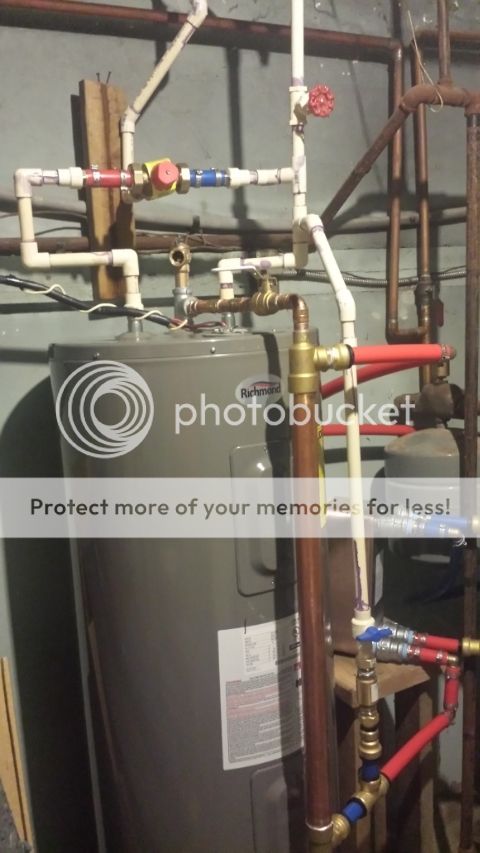- Nov 30, 2010
- 126
I have done a lot of searching on this forum for my answer, but the search bar on here is not very friendly.
I am installing a outdoor wood boiler. My current system is a propane fired boiler, running baseboards throughout the house.
I will be installing a sidearm to my existing electric 40 gallon hot water heater.
My question is this: I have read, and been told by two different dealers two contradicting methods to install the sidearm. Both say to install the DW on the bottom side to the drain via a tee, but one says to hook the top side DW to the outgoing hot water line from the top of the tank via a tee, and one says to hook it up to the cold side going into the top of the tank via a tee. Which method is correct?
I can't install it via a tee to the relief valve location because it is not located on top of the hot water tank, but out the side near the top???
Is the top diagram correct or is the bottom one correct?


I am installing a outdoor wood boiler. My current system is a propane fired boiler, running baseboards throughout the house.
I will be installing a sidearm to my existing electric 40 gallon hot water heater.
My question is this: I have read, and been told by two different dealers two contradicting methods to install the sidearm. Both say to install the DW on the bottom side to the drain via a tee, but one says to hook the top side DW to the outgoing hot water line from the top of the tank via a tee, and one says to hook it up to the cold side going into the top of the tank via a tee. Which method is correct?
I can't install it via a tee to the relief valve location because it is not located on top of the hot water tank, but out the side near the top???
Is the top diagram correct or is the bottom one correct?







